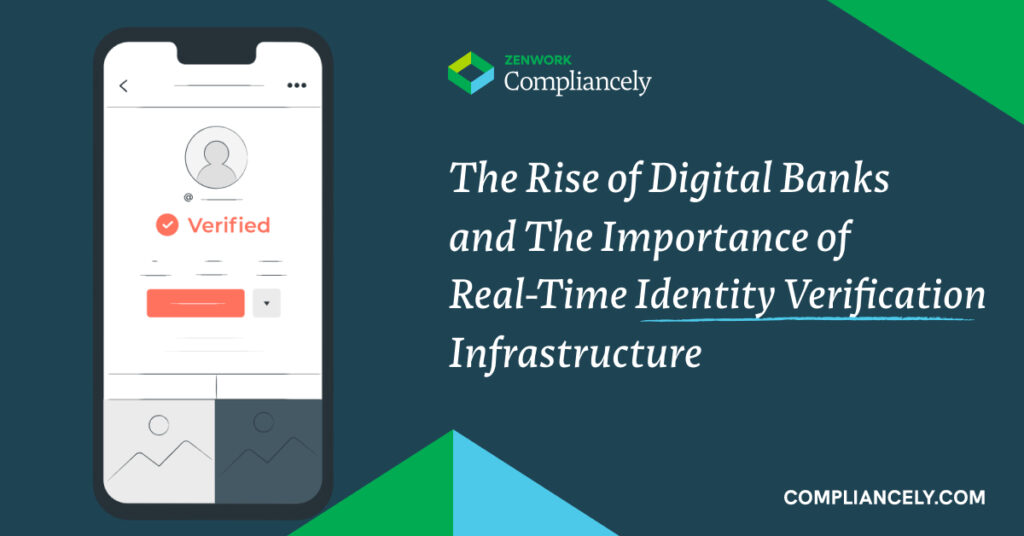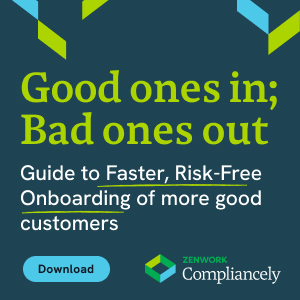The Rise of Digital Banks and The Importance of Real-Time Identity Verification Infrastructure

Neo banks or popularly known as digital banks seem to be the future of banking. With circumstantial advantages rising due to the global pandemic, and the paperless approach to account creation and digital transaction enablement, banks have virtualized most banking programs.
Identity verification joins these trends as digital banks are streamlining their digital banking experiences.
The following will discuss identity verification, its digitalization, and how it facilitates convenient digital banking experiences for customers around the world.
What Is Digital Identity Verification?
Just like a non-virtual identity verification process, a digital or virtual identity verification process identifies, records, validates and verifies the identities of an individual or entity to check the validity and credibility of the information provided.
The only difference here is that while traditional methods of verification require manual intervention, digital identity verification comes in a variety of virtual experiences, including but not limited to automated, AI-powered, software technology, and customized.
As a part of the Know, Your Customer procedure, banks and financial services companies tend to depend on identity verification to confirm and verify the details of their incoming customers. To accomplish this, identity information such as the name, address, date of birth, and national identification number is obtained from the customer with consent.
Banks additionally ask for proof of identification, such as a passport, taxpayer identification number or social security number, and other forms of identity within reason to validate the identification details.
The gathered identification information is checked against the authorized records of the government to verify the customer’s civil and financial history, and assess risk.
If the customer’s information does not match the records, the information is further scrutinized to verify if the customer is listed in any of the watch lists of the government. This way the banks are in power to assess the risk a profile could bring in.
Further, banks can reject high-risk profiles that can permanently tarnish the reputation of an organization and any individual or entity could result in penalties and/or legal assessments.
A robust customer identification process allows banks and financial institutions to establish a foundational relationship, allowing both parties to contract with each other in consensus.
When this entire process is automated through the use of computer technology, the identity verification process is digitalized, giving it the name ‘digital identity verification process.
Neo Banks: An Overview
Neo banks are virtual banks that do not have a physical location or operational branches for customers to visit. They operate through various digital and online mediums, such as websites, software applications, web portals, and more.
Unlike physical banks with a geographical address, digital or neo banks function online, allowing users from around the world to access their mobile-first banking and fund transfer solutions.
Verified and credible neo banks are regulated by the deposit insurance duo of America, such as Federal Deposit Insurance Corporation (FDIC) and National Credit Union Administration (NCUA). These regulatory bodies require neo banks to report and comply with the digital banking rules and regulations as stipulated.
Although some neo banks are still coping with the transformational wave of the digital world, others have created a niche in the industry, even becoming market leaders of the current decade.
Currently, neo banks have fostered a profit market of $27 billion, making the digital-only banks one of the biggest emerging markets globally.
Examples of top neo banks in the U.S. include Chime, Aspiration, MasterCard, Varo, and more.
How Do Neo Banks Function?
Unlike chartered banks, neo banks are financial institutions that provide mobile banking and fund transfer solutions with in-built security features. With flashy front-end interfaces, neo banks onboard customers globally and allow them to create “freemium” digital bank accounts.
Users can choose to link their other bank accounts with their primary digital bank account. This way, users do not have to change platforms to complete certain payments or fund transfer transactions.
Many digital banks also provide extended payment solutions, such as secured payment gateways for users to transact securely. Unlike regular banks, digital banks do not provide overdraft or credit risk services due to geographical and regulatory constraints.
Even though neo banks are establishing a profitable market, the legal end of the stick is still not clear. In the event of fraudulent transactions, resolution procedures are in the grey area.
Neo banks are regulated to prevent money laundering, bribery, terrorism-funding, corruption, and identity fraud. This means neo banks have to take extensive measures to monitor and control money laundering and alike criminal activities within their digital ecosystem.
Where Does Identity Verification Fit In The Digital Banking Ecosystem
Just like a regular bank, a digital bank also functions on the merit of KYC processes, and this includes onboarding a user basing their government-authorized identification.
Neo banks can leverage the technological advancement of identity verification solutions to optimize their profile vetting and identity verification processes.
The very step that leads to a doorway of unlimited digital experiences for users can be mediated to obtain identity information and proof from the user without disrupting the user experiences. Many neo banks in the market are following look-alike strategies to establish the same.
It is nearly impossible for neo banks to conduct a legal bank-customer relationship with the user without identifying the user per the official records. By integrating an automated, AI-powered identity verification infrastructure like Compliancely, neo banks can outsource their profile vetting operations through identity verification API solutions.
This way neo banks do not have to compromise their user experiences and can easily maintain regulatory compliance.
How To Choose A Reliable Digital Identity Verification System
A digital identity verification solution must address four central themes of neo banking as follows.
- It must provide authorized sources of data to validate the information
- The data sources must be in sync with the government records
- The identity searches must provide accurate results
- The solution must be highly scalable to meet the dynamic verification needs of neo banks
This way neo banks do not only onboard verified customers but prevent money laundering and terror-financing activities through the inherent AML approach of the digital identity solutions.
Meet Compliancely – The Real-Time Identity Verification API Infrastructure
Compliancely is an identity verification infrastructure designed to power businesses with real-time identification solutions. Banks (digital and non-digital), financial institutions, insurance companies, and businesses from various industries can improve and streamline their KYC procedures and CIP experiences through our dynamic identity solutions.
Here’s how Compliancely’s identity verification infrastructure helps your neo banking ecosystem.
- Verify users with 17+ real-time authorized checks
- Check as many as 100,000+ profiles in a day
- Validate identities by the official records
- Search authorized government lists and databases
- Screen financial and civil background of individuals and entities
- Generate automated reports for internal assessments and communication
- Reduce manual workload with API solutions
Priced according to your identity vetting requirements, Compliancely is a must-have if you want to optimize your customer onboarding experiences and prevent regulatory risks.
